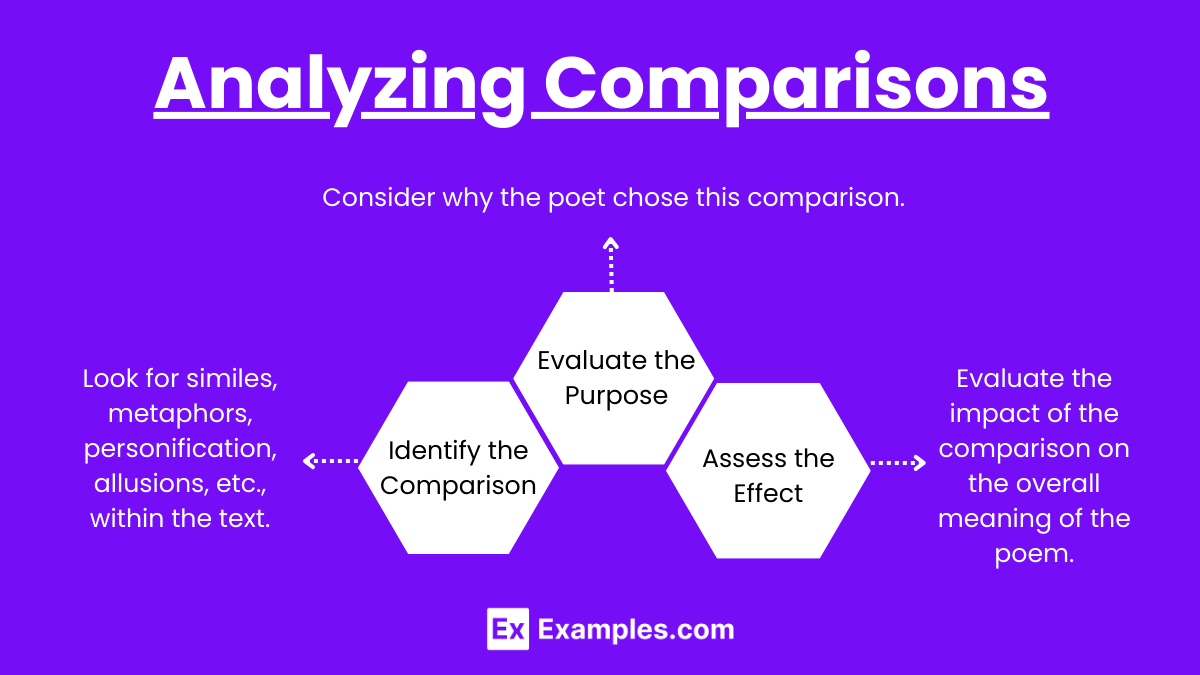In AP English Language and Composition, mastering the use of comparisons in poetry—including personification and allusion—is crucial for crafting effective rhetorical sentences and detailed cumulative sentences. These techniques enhance both argumentative speech and argumentative writing by creating vivid imagery, evoking emotions, and adding depth to analysis. Understanding how poets use comparisons allows students to develop insightful interpretations and articulate their arguments more persuasively, enriching their overall communication skills and textual analysis.
Learning Objectives
For mastering comparisons in poetry in AP English Language and Composition include the ability to construct detailed cumulative sentences, write clear explanatory essays that elucidate these techniques, and compose insightful expository essays that explore their effects. Students will learn to craft precise rhetorical sentences to convey complex ideas, develop coherent final thesis statements, and apply critical thinking to analyze and interpret the use of comparisons, such as personification and allusion, connecting these techniques to broader themes and arguments in their writing.
Comparisons in Poetry
Comparisons in poetry involve linking two different things to highlight their similarities or contrasts, enhancing the reader’s understanding and emotional response.
Types of Comparisons

Simile:
- Definition: A simile is a direct comparison between two different things using “like” or “as.”
- Purpose: It makes descriptions more vivid and helps readers understand an unfamiliar concept by relating it to something familiar.
- Example: “Her smile was like the sun, brightening up the room.”
Metaphor:
- Definition: A metaphor is an implicit comparison between two unlike things by stating one thing is another.
- Purpose: It creates a stronger, more direct association between the compared elements.
- Example: “The world is a stage.”
Personification:
- Definition: Personification attributes human characteristics to non-human objects or abstract ideas.
- Purpose: It creates vivid imagery and emotional resonance by making the non-human relatable.
- Example: “The wind whispered through the trees.”
Allusion:
- Definition: Allusion is a brief, indirect reference to a person, place, event, or literary work.
- Purpose: It enriches the text by connecting it to external contexts, adding deeper meaning and insight.
- Example: “He met his Waterloo,” referencing Napoleon’s defeat.
Hyperbole:
- Definition: Hyperbole is an exaggerated statement not meant to be taken literally.
- Purpose: It emphasizes the intensity of emotions or characteristics.
- Example: “I’ve told you a million times.”
Symbolism:
- Definition: Symbolism uses symbols to represent ideas or qualities.
- Purpose: It conveys complex ideas through more simple or concrete images.
- Example: “A dove symbolizes peace.”
Analogy:
- Definition: An analogy explains a concept or idea by comparing it to something else.
- Purpose: It clarifies or explains by highlighting similarities.
- Example: “Life is like a box of chocolates—you never know what you’re gonna get.”
Purpose and Effects of Comparisons

- Enhance Understanding: Comparisons help readers grasp complex ideas by relating them to familiar concepts.
- Create Vivid Imagery: They make descriptions more vivid and memorable.
- Evoke Emotions: Comparisons can evoke specific emotional responses.
- Add Depth: They add layers of meaning and deepen the reader’s engagement with the text.
Analyzing Comparisons

Identify the Comparison:
- Look for similes, metaphors, personification, allusions, etc., within the text.
- Determine what two elements are being compared.
Evaluate the Purpose:
- Consider why the poet chose this comparison.
- Analyze how it enhances the reader’s understanding or emotional response.
Assess the Effect:
- Evaluate the impact of the comparison on the overall meaning of the poem.
- Discuss how it contributes to themes, tone, and imagery.
Examples in Literature
Simile Example:
- From “A Red, Red Rose” by Robert Burns: “O my Luve is like a red, red rose That’s newly sprung in June.”
Metaphor Example:
- From “Hope is the thing with feathers” by Emily Dickinson: “Hope is the thing with feathers That perches in the soul.”
Personification Example:
- From “Ode to the West Wind” by Percy Bysshe Shelley: “O wild West Wind, thou breath of Autumn’s being.”
Allusion Example:
- From “The Waste Land” by T.S. Eliot: “April is the cruellest month, breeding Lilacs out of the dead land,” an allusion to Chaucer’s “Canterbury Tales.”


